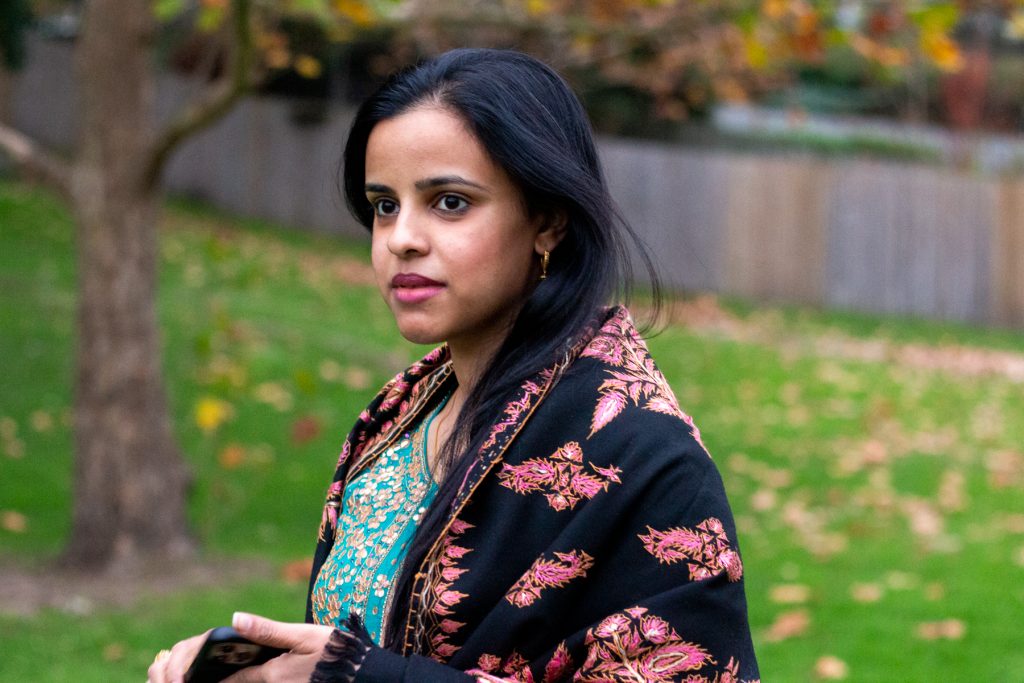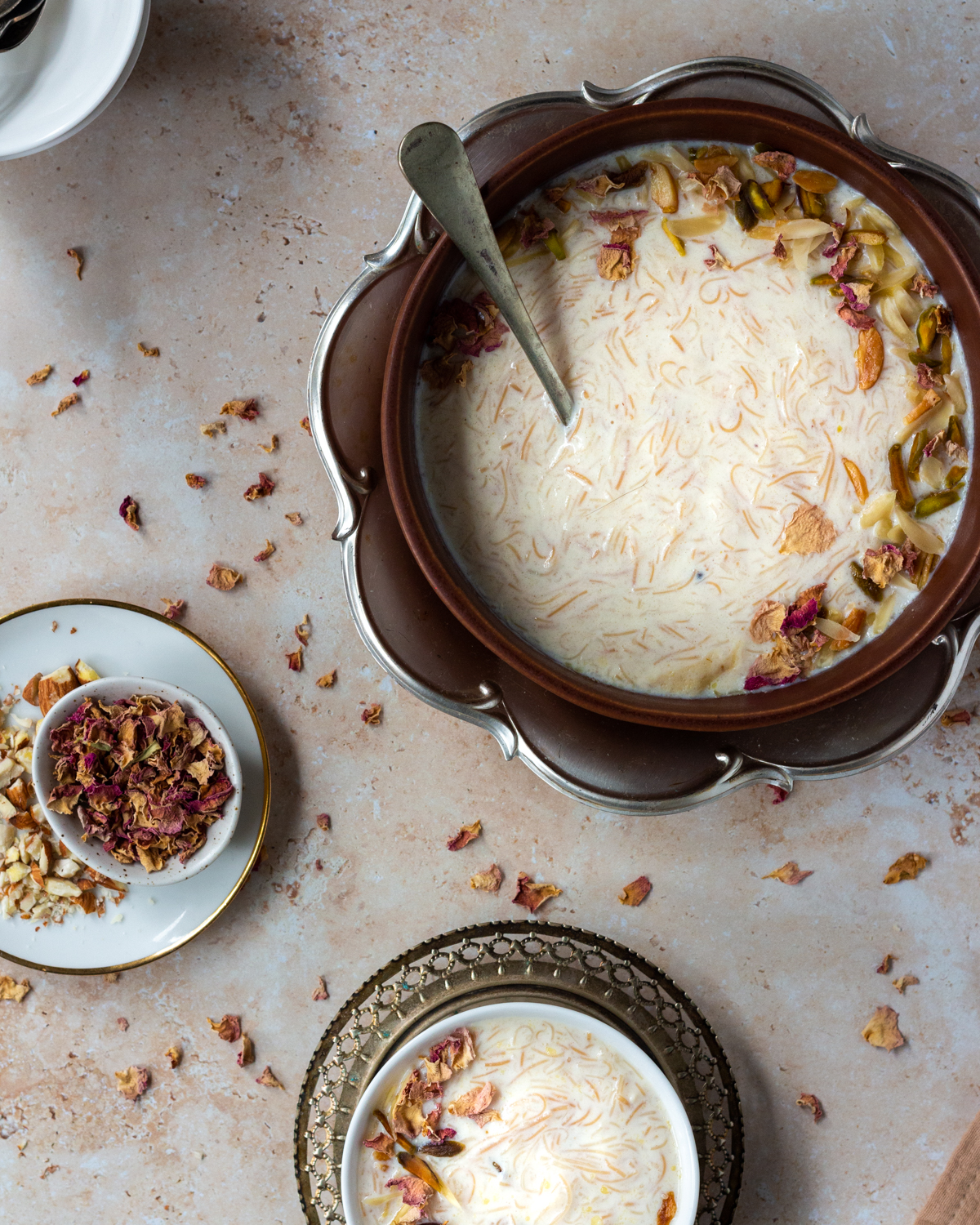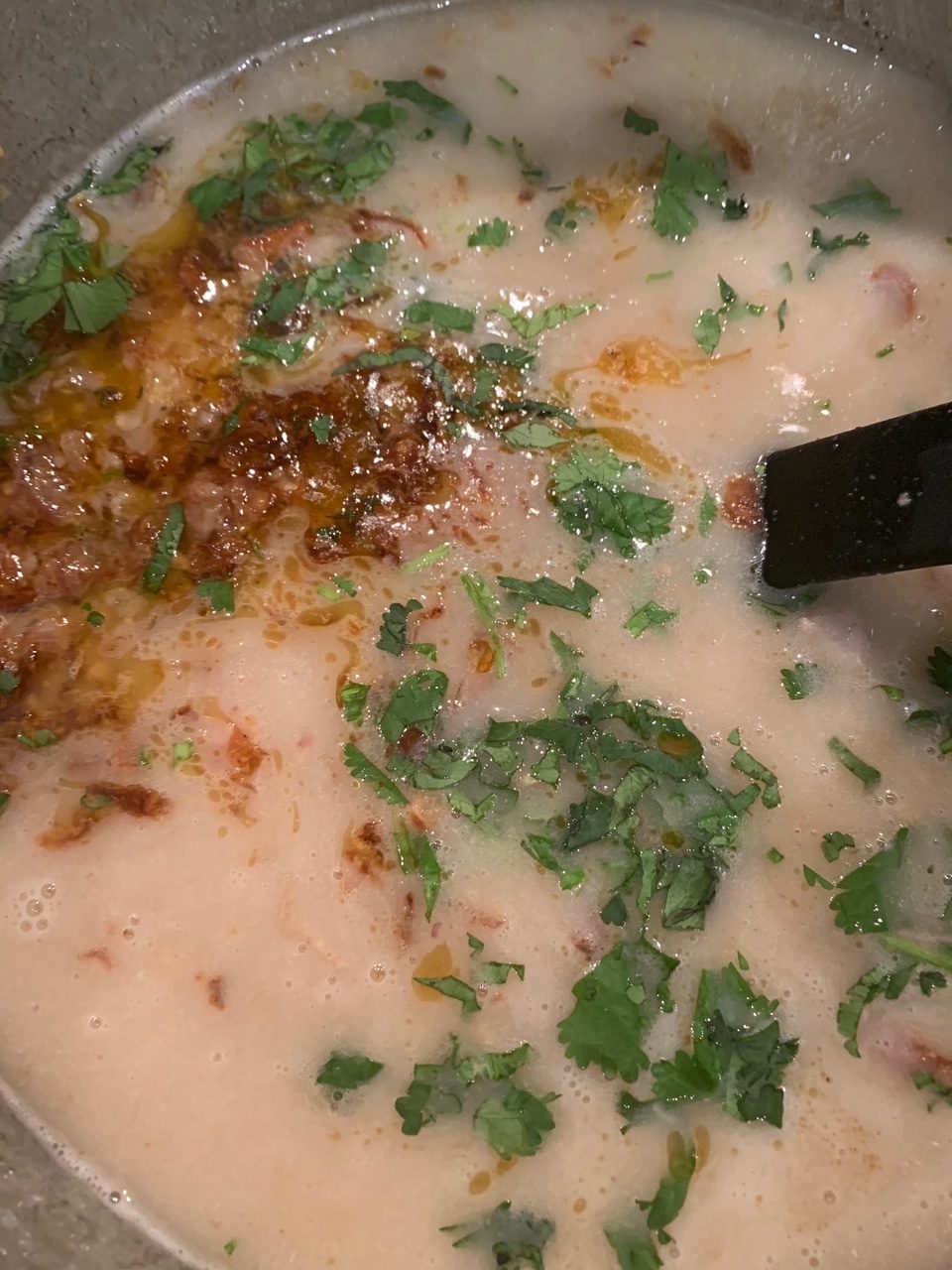Kiran’s Sheer Khurma
 Pakistan
Pakistan 
Enjoying a bowl of sheer khurma is one of my favourite Eid traditions. Also known as sheer, seviyaan (vermicelli) or doodh seviyaan (vermicelli with milk), sheer khurma is a popular Eid dessert in Pakistan and in India. It is made with vermicelli (called seviyaan) and cooked in milk with dates, nuts and cardamom.
There are two Eid festivals celebrated by Muslims around the world. The first is known as Eid-ul-Fitr, also known as Meethi Eid (sweet Eid), or Chooti Eid (small Eid). It’s the Islamic festival that signifies the end of Ramadan, with the name “Eid-ul-Fitr” translating to “the festival of the breaking of the fast”. The second is known as Eid-ul-Azha which happens 2 months and 10 days after Eid-ul-Fitr.
Just like Ramadan, the Eid-ul-Fitr festival begins with the sighting of the new moon. On the 29th day of Ramadan as per the lunar calendar, Muslims go out after sunset to look for the new crescent moon. Mosques have committees set up, and people go to the rooftops or a higher access point to try to see the moon. Once it’s confirmed that the moon has been seen (in Pakistan, this is announced on television and via a loud speaker on the streets), there’s both panic and excitement. Excitement that it’s Eid tomorrow, and panic because there’s only a few hours to get everything ready for the festivities tomorrow. That’s why sometimes when the moon isn’t sighted, there’s a sigh of relief that there’s an additional day to prepare!
The preparation for my mother’s sheer khurma always started the night before Eid, known as Chand Raat or “the night of the moon”. Similar to Christmas Eve, this was the time when it seemed like the entire city was out and about. People rushing to the grocery stores to get last minute ingredients, girls to the beauty parlours to get mehndi (henna) applied, and of course last-minute shopping for bangles, clothes and gifts. Shops, beauty parlours and tailors all open late t0 cater to all the customers. My mother would send one of my brothers to get fresh cow’s milk from the neighbourhood milk store. In Pakistan, the milk that was consumed at home was Tetra Pak or UHT milk due to its shelf life. However, when it comes to speciality milk-based desserts, they are always made using fresh milk.
My responsibility was chopping and slicing the nuts. I would always do this late at night, after I had tidied up my room and set out my clothes, shoes and bangles for Eid. Then I would slice up almonds and pistachios and set them out in a container for my mother.
Th next day when I woke up, there would be a huge pot of sheer khurma on the stove, along with a breakfast of Pakistani style omelettes and bread on the table. The Pakistani element came from the addition of sliced green chilies, diced onions and red chili powder along with sliced bread that was toasted on a tawa (frying pan) with oil.
My father and brothers would come back from Eid prayers and we would all wish each other Eid Mubarak and sit together for breakfast, followed by a bowl of hot sheer khurma.
After breakfast, we would visit different relatives throughout the day. One of the main components of the Eid celebrations is meeting friends and family members, exchanging Eid greetings and giving Eidi (cash or gifts) to the kids. Everyone would be dressed up in their best clothes, with girls having henna applied on their hands and wearing bangles. The celebrations go on for three days, so one day we would be going to a relative’s place and the next day they would be coming to us. When we went over to someone’s place, or they came over to ours, there would be refreshments and snacks served; these would be served in the form of an Eid trolley with an array of items ranging from savory snacks such as samosas, spring rolls and sandwiches to spicy tangy chana chaat. There’s always some dessert – maybe a traditional Pakistani halwa or something continental in the form of mini tarts, biscuits, a tea cake or cupcakes. There might also be dry fruit and nimco, a blend of fried lentils, peas and crisps for quick nibbles. As guests came and went, the Eid trolley items would be refilled.
The variety of items on the Eid trolley varied from household to household but the one that was a constant everywhere was sheer khurma. Every household had their own version – a thicker version with lots of vermicelli, a version with condensed milk, a version with lots of raisins, and then others which were a dry style version. They all tasted good in their own way but my absolute favourite had to be the one with lots of milk and less seviyaan (vermicelli), just like my mother made. It was liquid enough that you might as well drink it in a bowl instead of eating it with a spoon! And it’s how I will be making it this Eid in Australia too.
Eid Mubarak!
Kiran Afzal
May 2022
Share this story

Prepare the nuts: Place the almonds in boiling water for 10-15 minutes. The hot water will help release the skins. Once the water is lukewarm, peel the skins off. Once the almonds are cool, slice them lengthwise. Slice the pistachios lengthwise and set them both aside. (You can also use pre-sliced almonds and pistachios.) Heat 2 tablespoons ghee / oil in a medium frying pan and add the sliced nuts. Fry for about 2 minutes till they become light golden in colour. Remove from the heat and set aside.
Place the milk in a large heavy bottomed saucepan. Bring the milk to a boil, and then turn heat to low. Add the dry dates (chuwaray). Cook on slow heat for an hour stirring every 10 minutes or so to ensure the milk doesn’t burn. The colour of the milk will change from white to a pale yellow as it cooks. The dry dates will become soft as they cook in the hot milk – they can be removed before serving.
While the milk is cooking, peel the cardamom pods, and remove the seeds. Pound the cardamom seeds with a mortar and pestle or a rolling pin and keep aside. Add another tablespoon of ghee in the same frying pan that was used to fry the nuts. Add the crushed cardamom seeds and cook for about a minute. Then add the roasted vermicelli, roughly crushing with your hands. Fry for about 2 minutes till it changes to a light golden brown, and then add to the milk. Cook the vermicelli in the milk for about 10 minutes, and then add sugar. Cook for another 10 minutes, stirring every minute to make sure the vermicelli is soft and the sugar is dissolved. Taste the sheer khurma and adjust sugar if needed. Add the fried almonds and pistachios. Cook for 2 minutes and serve right away in bowls. Garnish with dried rose petals.
Note: If a thicker sheer khurma is preferred, increase the quantity of vermicelli used.




